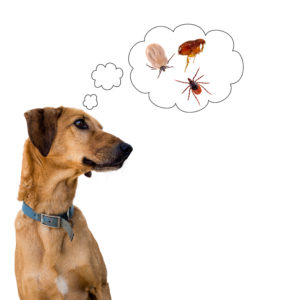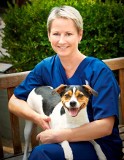 Possible problems with oral flea and tick medications have been in the news and on social media recently. I don’t blame you if you are concerned. Fleas and ticks, the diseases they carry, and the treatments to control them are something your primary care veterinarian is very familiar with, and deals with on a daily basis.
Possible problems with oral flea and tick medications have been in the news and on social media recently. I don’t blame you if you are concerned. Fleas and ticks, the diseases they carry, and the treatments to control them are something your primary care veterinarian is very familiar with, and deals with on a daily basis.
It is important to know that fleas and ticks aren’t merely a nuisance, they also transmit potentially serious diseases to animals and humans. Unfortunately these parasites are a year-round problem in the Mid-Atlantic. Many products have been developed to combat them, and have varied in both safety and efficacy. Over time, products have been developed that are safer, and do a better job of killing the pests with fewer side effects.
Veterinarians have extensive experience with both the topical and oral parasite preventatives and use this experience when making recommendations. There are several factors to consider in selecting a product. Some products kill only adult pests, while others also kill eggs and larvae. Some work against fleas, ticks, heartworms, and mosquitoes; while others are only effective controlling one species. Other factors to consider include cost and ease of use.
NexGard and Bravecto were introduced on 2014 and were considered “game-changers” in the fight against fleas and ticks. Both products are in the chemical family isoxazolines. This class of drugs works by selective inhibition of GABA- and glutamate-gated chloride channels, leading to hyper-excitation and death of the flea or tick. In other words, they both kill fleas and ticks by causing uncontrolled activity in the nervous system. Because GABA channels in mammals have lower sensitivity to isoxazolines, and mammals lack anion-inhibitory glutamate channels, there is reduced possibility for toxicity in dogs and cats, than in fleas and ticks. Simparica, and then Credelio were later approved to products in this class of parasiticides.
The FDA carefully reviewed studies and other data on Nexgard and Bravecto, then Simparica and Credelio, prior to approval. Yet, there is always the potential for new information to emerge when the product is used in a larger population after approval, and the FDA pays particularly close attention to adverse event reports for several years after a new drug is approved. Currently, the agency is asking the manufacturers to make the changes to the product labeling.
Why has Friendship recommended NexGard?
I would like you to know that the potential for neurologic side effects is not unknown. The primary care doctors at Friendship felt an alternative to topical parasicides was needed. A preventative product is only effective when used routinely, and topical products present challenges in the application, and concern for exposure of the pet family to the parasticide. NexGard is approved for use in puppies as young as 8 weeks, where there other products are only for puppies older than 6 months. This is important! Puppies need protection from fleas and ticks too.
A potential for adverse reactions is also considered. While both NexGard and Bravecto were introduced in the same time frame, the doctors at Friendship considered a product with a shorter duration of action safer in the event of an adverse event. The safety studies for NexGard had a good outcome with a very small percentage of dogs experiencing minor adverse effects. The most frequently reported adverse reaction was vomiting; less frequent reactions included dry skin, diarrhea, lethargy, and anorexia. In the US field study, three dogs with a known history of seizures were included. Two of the three had seizures during the the 90 day field trial.
The FDA states. “these products continue to be safe and effective for the majority of animals.” But it is important to be aware of the fact that any individual pet may have an adverse reaction to any type of flea or tick product.
Since the release of NexGard, adverse events that have been reported for dogs are listed here in decreasing order of reporting frequency: Vomiting, pruritus, lethargy, diarrhea (with and without blood), anorexia, seizure, hyperactivity/ restlessness, panting, erythema, ataxia, dermatitis (including rash, papules), allergic reactions (including hives, swelling), and tremors. An adverse event is one that occured close enough to the administration of the product that they could be related, it does not necessarily have a causal relationship.
While this list of possible problems may be concerning, the experience at Friendship is that adverse events are rare. We have been using and recommending this product for 4 years. As other newer products in this class have become available, we have continued to stay with NexGard as it is an efficaceous product and our patients have been doing well on it. We do see an occassional dog vomit after receiving a dose, but usually they do not experience this problem with future dose. NexGard has also been shown to prevent the transmission of Lyme disease!
Friendship doctors will continue recommend NexGard, in fact many of us use it for our own pets. We will also be watching for new information about the product, and compare it to newer products as they are developed. If you are uncomfortable using this product for your dog, please contact your primary care provider to discuss alternatives.
Dr. Kuehn graduated from the University of Minnesota and joined Friendship in 2005. She is a Diplomate of the American Board of Veterinary Practitioners and serves as Friendships Chief of Primary Care. Her interests include endocrinology, urinary tract disease, ophthalmology, and soft tissue injury.

